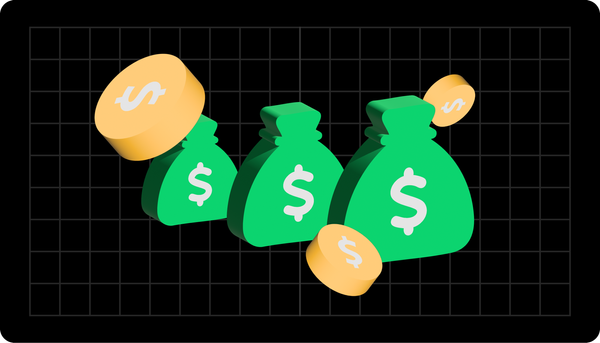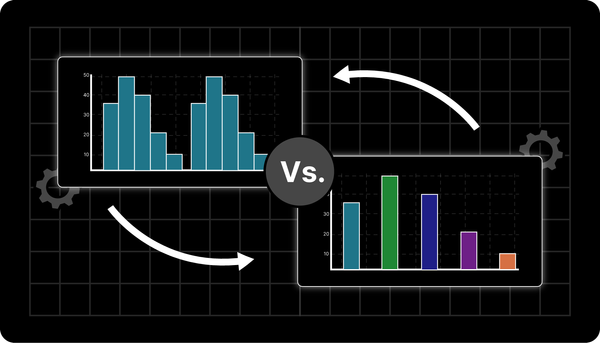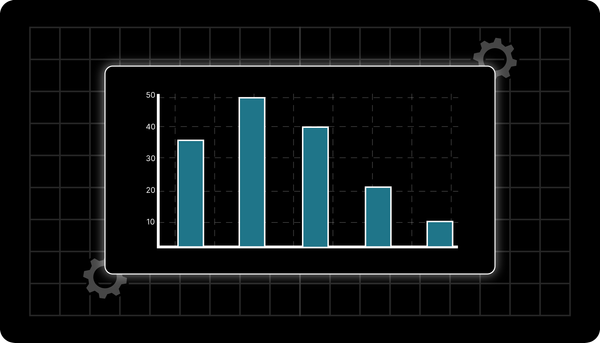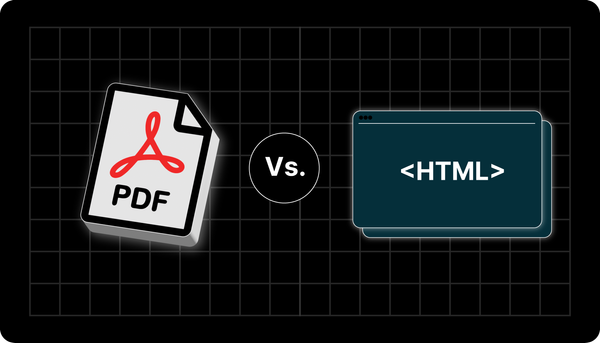How to Calculate Profit Margins (+Types and Easy to Use Tool)
The profit margin is one of the most commonly used financial ratios to manage your finances. Check out the types and tools to help you work it out here.

The profit margin is the most commonly used financial ratio for managing finances. Knowing how to calculate profit margins is essential for a startup.
Reviewing three distinct tiers of your income statement, with each level calculating its profit margin, is essential.
This is done by dividing your profit by total revenue and multiplying by 100. While it may seem complex at first, it's manageable.
Luckily, we have done this multiple times in our business, know all the types of profit margins, and have a tool we use to make things easier.
Profit Margin Types
As mentioned, you need to analyze three levels on the income statement: gross profit margin, operating profit margin, and net profit margin. Each provides a view of your company's operations.
Your Gross Profit Margin
Gross profit is one of the most fundamental metrics for evaluating a business's financial health.
It calculates the profit remaining from total revenue after deducting the COGS (cost of goods sold), which encompasses all direct expenses linked to producing the goods sold.
These expenses include labor costs and raw materials for assembling your products. However, it's important to note that other costs, such as debt repayments, operating expenses, overhead, taxes, and non-recurring expenses, like equipment purchases, are not factored into this calculation.
You then use your gross profit margin to measure the proportion of gross profit relative to total revenue. It will show the percentage earned and retained as a profit, followed by the deduction of your production costs.
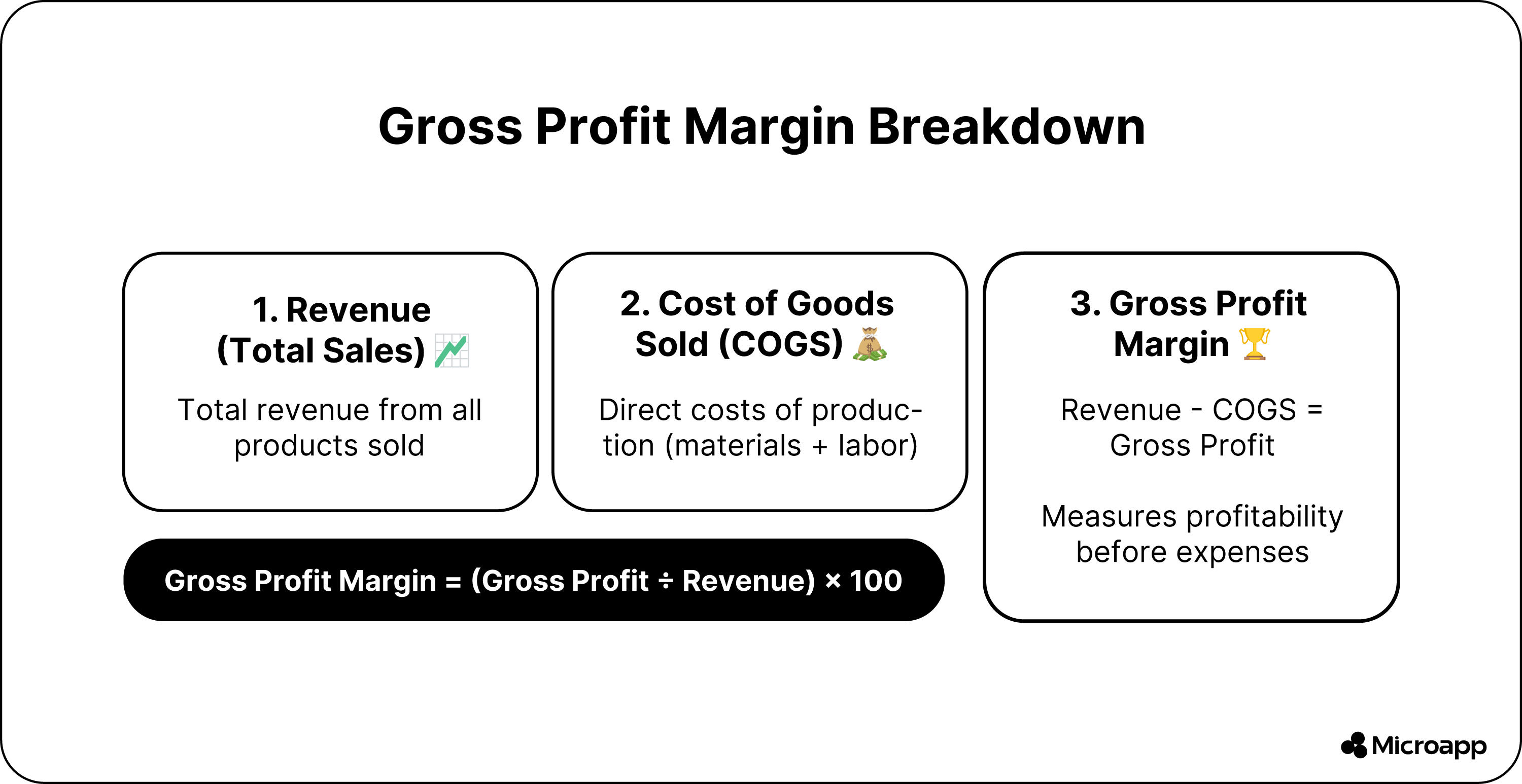
Your Operating Profit Margin
The metric we found while using is more complex as it considers all your overheads, sales, administrative, and operating expenses to run your business daily.
The figure excludes nonoperational debts and taxes, including amortization and asset depreciation.
So, when you divide your operating profit with the revenue, you get a mid-tier profitability margin reflecting your percentage of each buck remaining after you pay all expenses to keep your company running.

Your Net Profit Margin
This metric will reflect your business capability to turn your income into returns. Net income is your total revenue after considering other income streams and expenses.
It will include your COGS, operational expenses, and payments of taxes, debts, and one-time costs or fees with any revenue from your secondary operations and investments.
What Determines a Great Profit Margin?
Well, it will depend on your type of business or industry. Our profit margin can vary from yours, so firms in various sectors are not always comparable.
For example, you should not compare your profit margins in a retail company to a gas or oil company. However, based on your profit margin, you can still see how your company is doing.
For instance, if your profit margin is 20%, then it is profitable with a 10% it is average. If your profit margin is 5% or under, it indicates you have a problem.
Still, no matter where any company sits, you must review your competition and yearly profit margins to see if you are on solid ground.
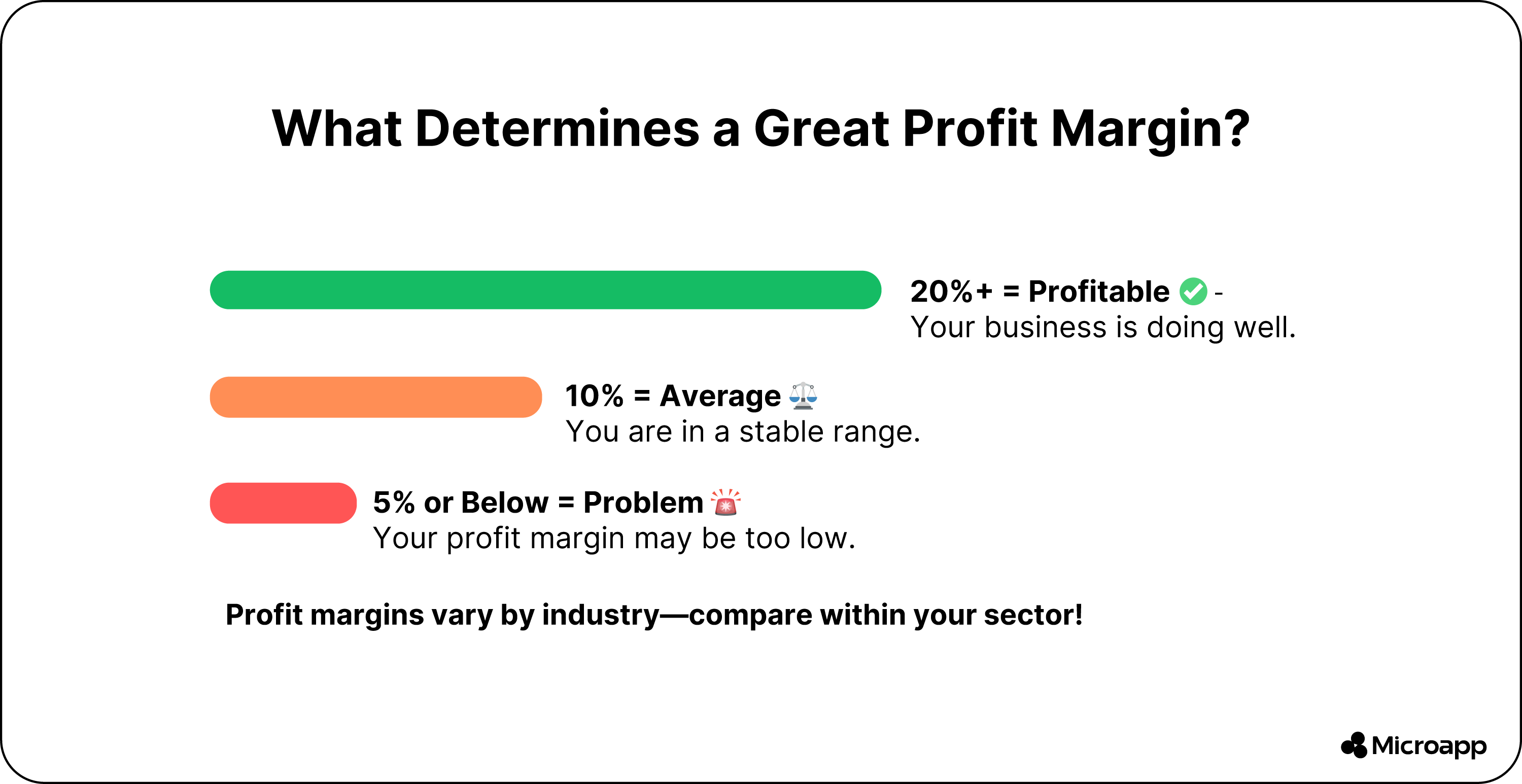
Different Tools To Calculate Profit Margins
As shown here, we experimented with two techniques while calculating our profit margins.
Calculating Profit Margins With Our Tool
We found our tool easier to use, making calculating your profit margin straightforward. Follow these easy steps:
- Start by inputting your revenue by entering your total sales generated within a specific period.
- Next, you determine your COGS by calculating the direct costs of producing goods or services.
- Then, consider your operating expenses by including all costs incurred in your business, like utilities, marketing expenses, rent, and salaries.
- Consider your taxes and the implications they have on your profits.
- Lastly, you obtain your profit margin percentage, which the calculator calculates based on your input.
The best part is that our calculator can determine your present value, future value, number of periods, interest rate, and payment.
Calculating Profit Margin Using Excel
If you prefer computer software, you can calculate the gross profit margin within an Excel spreadsheet. This process is long but still worth it. Before you start, you must add some information, including the cost of goods or services sold and revenue.
Here is a simple table with an explanation afterward:
In column A, you add your revenue figure, followed by your COGS. Then, in column C, you input your formula to work out your prevalent profit.
So, when you have added your figures to cells A2 and B2, your value for C2 will be the distinction between A2 and B2. You will find the profit margin in column D. However, you must input your formula: (C2/A2) x 100.
Here is an example:
For the year ending December 31, 2024, Microapp recorded a revenue of 36,1 billion USD. The operating income and gross profit are 9,7 billion USD and 5,1 billion USD. The net profit is 3.8 billion USD for the year. You will calculate your profit margins as follows:
- Gross profit margin = (9,7 billion USD ÷ 36,1 billion USD) × 100 = 28.9%
- Operating profit margin = (5,1 billion USD ÷ 36,1 billion USD) × 100 = 14.1%
- Net profit margin = (4,2 billion USD ÷ 29, 06 billion USD) × 100 = 11.6%
The example shows the significance of having good operating and gross profit margins. When a company has a deficiency at these levels, money is lost on operations, leaving you with less revenue to pay taxes and debt.
Still, the beneficial operating and gross profit margins enable Microapp to maintain a decent profit and meet all additional financial commitments.
How Can You Enhance Your Profit Margins
As a business, you need to improve your profit margins, which indicate how much capital you make from your gross income. Improving your profit margins can increase your profits without increasing gross revenue and sales.
Always Track Your Revenue and Expenditures
An important thing we found is to track our income and expenses to help us know what we spend. Every expenditure you have will lower your profit margin.
Yes, we know it is unavoidable. You must pay for website hosting, salaries, other costs, and supplies.
However, tracking expenses helps you identify unnecessary expenditures that you can reduce to increase the profit margin.
Do Bulk Buying
If you use the same supplies repeatedly to make goods or ship products, we recommend buying them in bulk from your regular suppliers. Always pay close attention to your price, as buying in bulk offers lower prices when you find supplies on sale. It will help decrease expenses and increase your profit on each sale.
Boost Your Business Efficiency
Look at sectors in your business that you can automate, as time costs money. There may be software you can utilize to organize consumer information. You could also invest in tracking software to help manage your customer notifications or shipping data.
Automating some parts of your business approach or uncovering other ways to boost productivity can help you save time and money. However, always remember your customers, product quality, and employees.
Make Customer Retention a Priority
Finding new clients and marketing goods takes time and expense.
Still, we found that focusing on various methods to improve customer retention helps to repeatedly make deals with the same clients without incurring conversion and lead-generating costs.
You can use personal automated emails to follow up with your new clients and offer deals for repeat purchases. It helps show your customers value, and you can do it through social media or a reward program.
With a lower marketing expense for each sale, your profit sale goes up to increase your profit margin.
Know What Product or Service Sells
You know your customers and what products or services they like. If a service or item is unpopular, continue investing money and time in what sells and stop wasting expenses on things that do not sell. Instead, take the less popular items and sell them at a discount.
What Is an Excellent Net Profit Margin to Have?
We found that a healthy net profit margin differs from industry to industry.
For example, in the utility industries, the profit margin for banks was 30%, and for software development, it was 16% in January 2024. The intermediate net profit margin was 10.66% for restaurants and 3.09% for retail.
Your business's margin will depend on it. However, you can compare your margins with those of your competition. Also, review your business yearly to ensure it is financially sound.
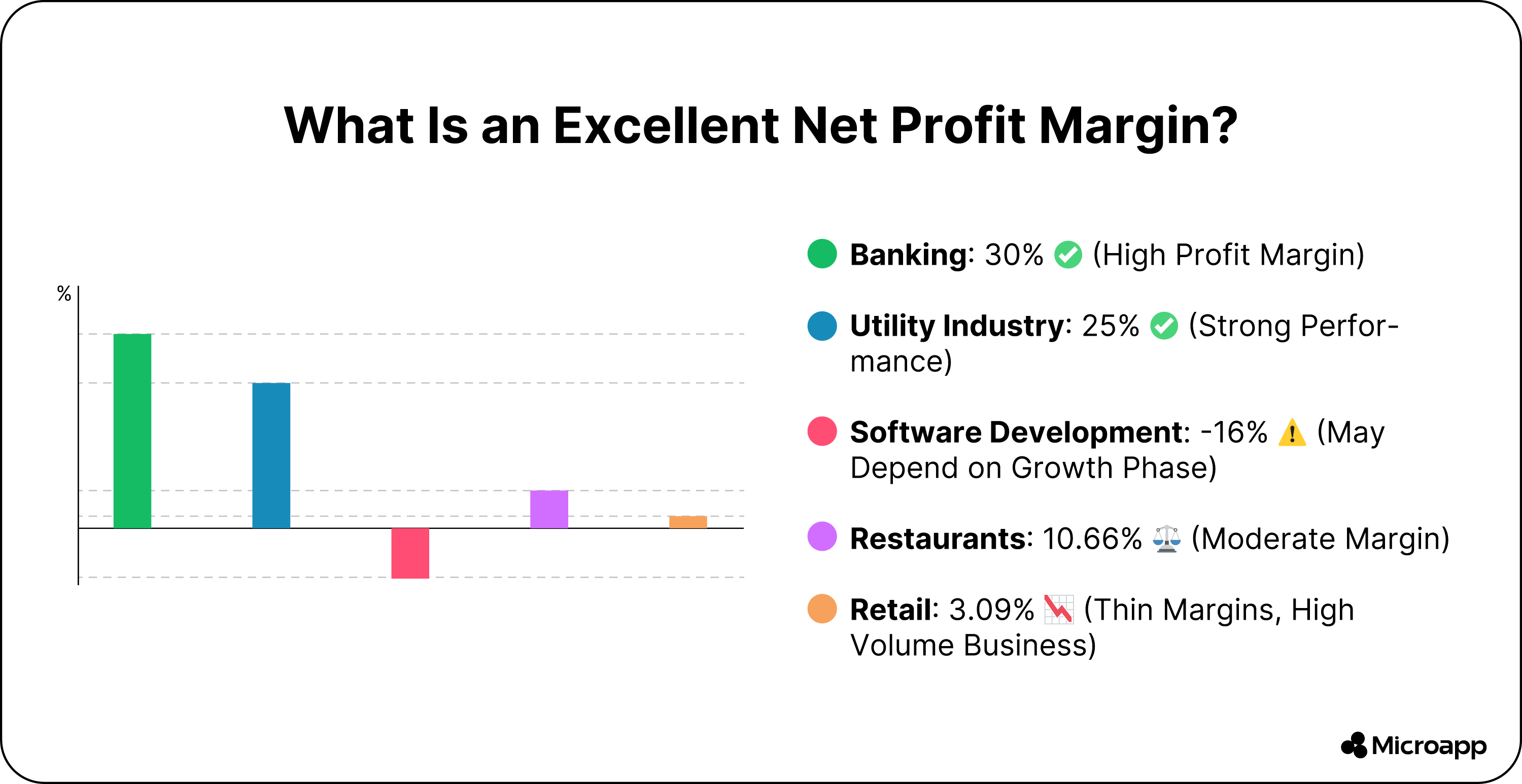
What is The Most Valuable Profit Margin Formula?
The most helpful profit margin is your net profit margin, which uses your net income. Your bottom line is essential for investors, business decisions, and creditors as it is usually reported in financial statements.
Still, each formula is valuable for internal research, as management uses the gross profit margin per unit or product to help pinpoint successful vs. unsuccessful development lines.
The operating profit margin helps determine the percentage of funds left over to pay the IRS, debt, and equity holders.
A worthy note is that you also get an adjusted gross margin similar to the gross profit margin, including your inventory and carrying costs. You can also calculate profit margins before paying your debts on and after the tax basis.
It is called after-tax unadjusted margin and determines the reserves you have left over to pay your lenders.
Wrap-Up: Calculating Profit Margins
Having profitability metrics in place helps you highlight your points of weakness and enables a yearly performance comparison.
If you are a startup, your profitability is essential for investors to determine whether they want to invest in your business. Furthermore, it allows investors and management to glimpse how your company compares to its competitors.
Profit margins can help you decide how well your company is generating profits. They can also help you compare your profit margins over various periods and those of other companies in your industry.


